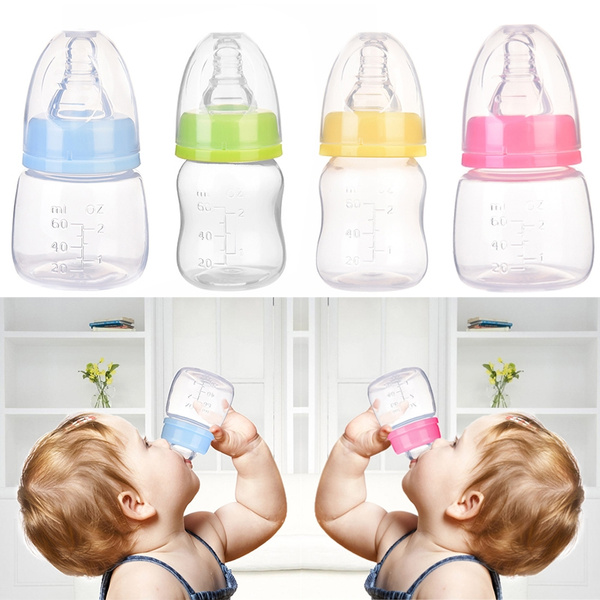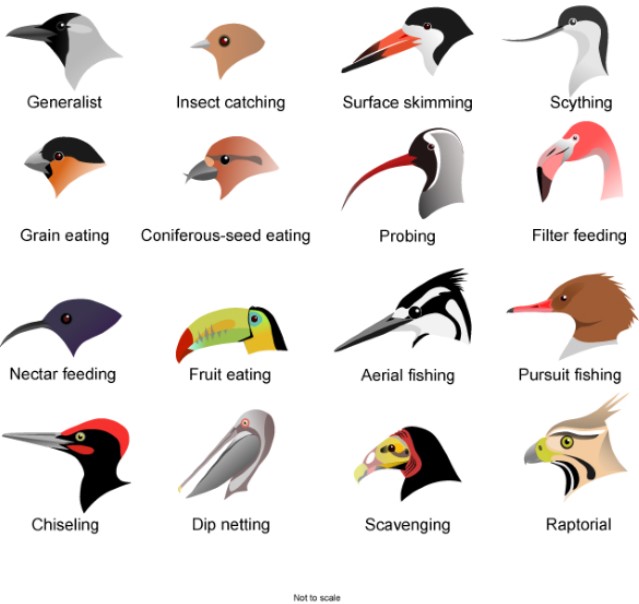Calculating formula feeds for baby
Amount and Schedule of Baby Formula Feedings
- In the first week after birth, babies should be eating no more than about 1 to 2 ounces (30 to 60 ml) per feed.
- During the first month, babies gradually eat more until they take 3 to 4 ounces (90 to 120 ml) per feed, amounting to 32 ounces per day. Formula-fed babies typically feed on a more regular schedule, such as every 3 or 4 hours. Breastfed babies usually take smaller, more frequent feedings than formula-fed infants.
If your baby sleeps longer than 4 to 5 hours during the first few weeks after birth and starts missing feedings, wake them up and offer a bottle.
By the end of the first month: Your baby will be up to at least 3 to 4 ounces (120 mL) per feeding, with a fairly predictable schedule of feedings about every 3 to 4 hours.
By 6 months: Your baby will consume 6 to 8 ounces (180–240 mL) at each of 4 or 5 feedings in 24 hours.
Formula feeding based on body weight
On average, your baby should take in about 2½ ounces (75 mL) of infant formula a day for every pound (453 g) of body weight. But they probably will regulate their intake from day to day to meet their own specific needs, so let them tell you when they've had enough. If they become fidgety or easily distracted during a feeding, they're probably finished. If they drain the bottle and continues smacking their lips, they might still be hungry.
There are high and low limits, however. If your baby consistently seems to want more or less than this, discuss it with your pediatrician. Your baby should usually drink no more than an average of about 32 ounces (960 mL) of formula in 24 hours. Some babies have higher needs for sucking and may just want to suck on a pacifier after feeding.
On-demand feeding
Initially it is best to feed your formula-fed newborn a bottle on demand, or whenever they cry with hunger. As time passes, your baby will begin to develop a fairly regular timetable of their own. As you become familiar with their signals and needs, you'll be able to schedule their feedings around their routine.
As time passes, your baby will begin to develop a fairly regular timetable of their own. As you become familiar with their signals and needs, you'll be able to schedule their feedings around their routine.
Eating & sleeping patterns
Between 2 and 4 months of age (or when the baby weighs more than 12 lb. [5.4 kg]), most formula-fed babies no longer need a middle-of-the-night feedings. They're consuming more during the day, and their sleeping patterns have become more regular (although this varies considerably from baby to baby). Their stomach capacity has increased, too, which means they may go longer between daytime feedings—occasionally up to 4 or 5 hours at a time.
If your baby still seems to feed very frequently or consume larger amounts, try distracting them with play or with a pacifier. Sometimes patterns of obesity begin during infancy, so it is important not to overfeed your baby.
Getting to know your baby's feeding needs
The most important thing to remember, whether you breastfeed or bottlefeed, is that your baby's feeding needs are unique.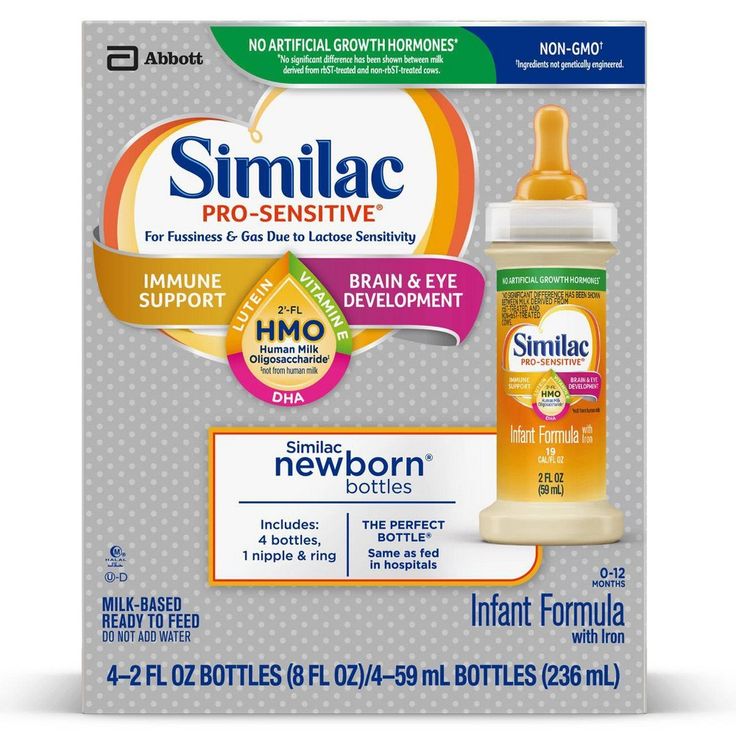 No book―or website―can tell you precisely how much or how often they need to be fed or exactly how you should handle them during feedings. You will discover these things for yourself as you and your baby get to know each other.
No book―or website―can tell you precisely how much or how often they need to be fed or exactly how you should handle them during feedings. You will discover these things for yourself as you and your baby get to know each other.
More information
- How Often and How Much Should Your Baby Eat?
- Making Sure Your Baby is Getting Enough Milk
- Is Your Baby Hungry or Full? Responsive Feeding Explained (Video)
- Remedies for Spitty Babies
- Last Updated
- 5/16/2022
- Source
- Adapted from Caring for Your Baby and Young Child: Birth to Age 5 7th Edition (Copyright © 2019 American Academy of Pediatrics)
The information contained on this Web site should not be used as a substitute for the medical care and advice of your pediatrician.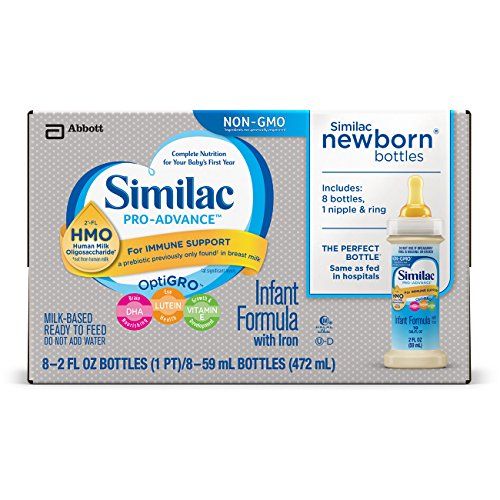 There may be variations in treatment that your pediatrician may recommend based on individual facts and circumstances.
There may be variations in treatment that your pediatrician may recommend based on individual facts and circumstances.
Baby Formula Calculator - How Many Ounces to Feed Baby Chart
Created by Aleksandra Zając, MD
Reviewed by Dominik Czernia, PhD and Jack Bowater
Based on research by
National Health and Medical Research Council of Australian Government “Infant Feeding Guidelines: information for health workers“ (2012)See 1 more source
Stanford Children's Health “Feeding Guide for the First Year“
Last updated: May 18, 2022
Table of contents:- What is infant formula?
- Newborn baby formula feeding charts
- How to use the baby formula calculator?
- How much milk should my baby drink? How do I know it's not enough/too much?
- FAQ
If you are a new parent, or are about to be, you've probably wondered, "How much milk should my baby drink?" - and the baby formula calculator has got you covered!
We all know that every baby is a special and has their own eating needs; still, it's good to get an idea of where your baby should be with baby formula feeding charts. The calculator finds the amount of infant formula to be given per day so that you can spend more time with your newborn. 👶
The calculator finds the amount of infant formula to be given per day so that you can spend more time with your newborn. 👶
We try our best to make our Omni Calculators as precise and reliable as possible. However, this tool can never replace a professional doctor's assessment. If any health condition bothers you, consult a physician.
What is infant formula?
Although pediatricians recommend exclusive breastfeeding for the newborn's first six months, there are situations where you may have to give baby formula to your child.
Baby formula (or just formula) is a special dietary product meant for feeding babies. It is usually made from cow's milk, although you can find goat milk-based baby milk. The animal milk is first treated so that it is suitable for babies. You should not feed your baby regular cow's milk instead of infant formula - small babies (up to one year old) cannot digest untreated cow milk properly, which can lead to health problems. Cow's milk also lacks the right amount of important nutrients, like vitamin C and iron, which can lead to iron-deficiency anemia. Formulas, on the other hand, are often enriched with iron together with DHA and ARA (docosahexaenoic and arachidonic acids), fatty acids that support baby brain development.
Cow's milk also lacks the right amount of important nutrients, like vitamin C and iron, which can lead to iron-deficiency anemia. Formulas, on the other hand, are often enriched with iron together with DHA and ARA (docosahexaenoic and arachidonic acids), fatty acids that support baby brain development.
There are more formula types available on the market - like soy, sheep's milk, and almond 'milk'. You can also find baby milk for special tasks, such as extensively hydrolyzed formulas (meaning the proteins have already been broken down), formulas for premature babies, or formulas that help those who suffer from acid reflux. You should only use special formulas if your pediatrician has recommended them to you. If you think the formula you are currently using is not suitable, talk to your doctor or midwife, and only after that should you try changing the formula.
Newborn baby formula feeding charts
Our baby milk calculator is based on the Australian and American recommendations on infant feeding in the first year of their life. We present these recommendations as simple charts so that you can quickly get an idea of how much and how often your baby should be fed.
We present these recommendations as simple charts so that you can quickly get an idea of how much and how often your baby should be fed.
How much milk should a baby drink per day?
Age | Amount of formula per day |
|---|---|
1-4 days old | 30-60 ml/kg (1-2 oz/kg) |
5 days - 3 months old | 150 ml/kg* (5 oz/kg) |
3-6 months old | 120 ml/kg (4 oz/kg) |
6-12 months old | 100 ml/kg (3-4 oz/kg) |
*Some infants may require 180-200ml/kg (6-8oz/kg)
Baby formula feeding chart - how often they should be fed?
Age | Approx. amount of formula per feeding | Number of feedings per day |
|---|---|---|
Newborn | 60-90 ml (2-3 oz) (may be between 15-60ml (0. | 8-12 times (every 2-3 hours) |
1 month | 60-120 ml (2-4 oz) | 6-8 times (every 3-4 hours) |
2 months | 150-180 ml (5-6 oz) | 6-7 times (roughly every 3-4 hours) |
4 months | 120-180 ml (4-6 oz) | 5-6 times (roughly every 4-5 hours) |
6 months* | 180-240 ml (6-8 oz) | 5-6 times (roughly every 4-5 hours) |
7-9 months | 180-360 ml (6-11 oz) | 3-5 times (roughly every 5-8 hours) |
10-12 months | 180-330 ml (6-10 oz) | 3-4 times (roughly every 6-8 hours) |
*Introduction of solid foods
How to use the baby formula calculator?
If you're still asking yourself how much milk should a baby drink, our calculator has got you covered.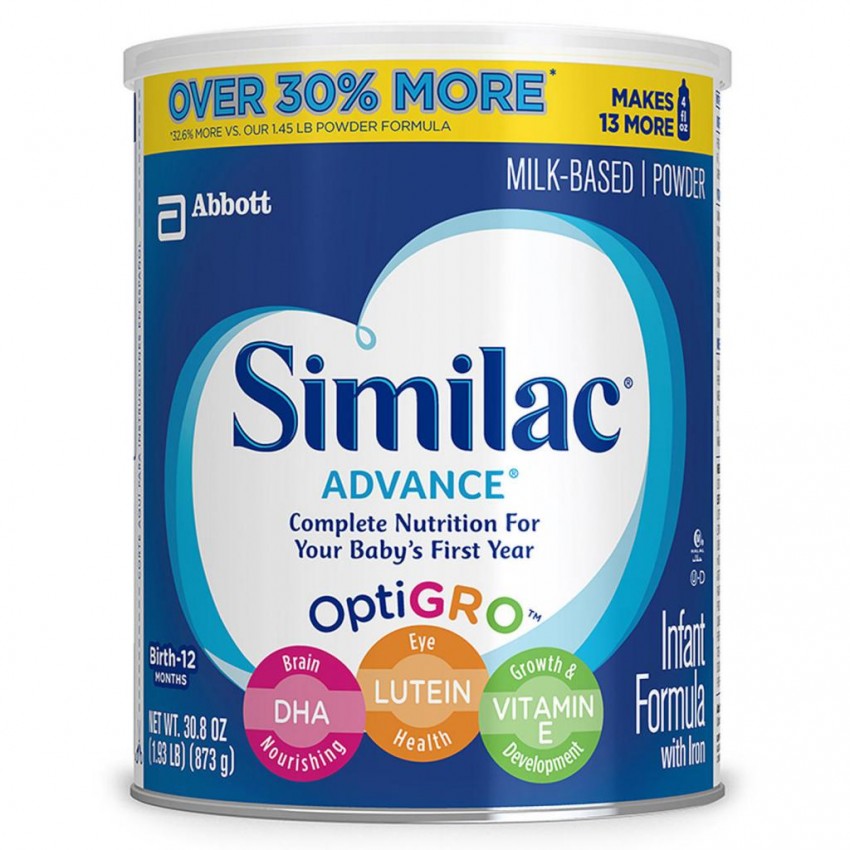 It will count the amount of infant formula that your child should drink per whole day (24 hours), based on their age and weight, and also provide you with suggestions of the volume of one portion and the frequency of feeding. Let's see how it works!
It will count the amount of infant formula that your child should drink per whole day (24 hours), based on their age and weight, and also provide you with suggestions of the volume of one portion and the frequency of feeding. Let's see how it works!
- Look at the calculator panel on the left side of the page.
- Input the baby's age.
Monthsare the default age unit, but if you've got a newborn at home, switch it toDays. You can also use other time units. - Provide the child's weight. You can switch freely between
kg,lband smaller units. - You get your results at the bottom of the baby formula calculator. You'll see the amount of baby milk to give per one day, (approximately) how much formula the baby will drink in a sitting, and how many times a day the baby should be fed.
- Remember, the results are approximate and give you a general overview of the baby's feeding. Every baby is unique and so are their feeding needs.

How much milk should my baby drink? How do I know it's not enough/too much?
There is one important thing to note - the baby formula calculator is not an oracle. The tool should give you an idea of the amounts of baby milk your child should eat, but there are no strict ranges. You may want to use the baby's milk intake tool to get an estimate of your baby's requirement. Most children will change the amount they eat from feeding to feeding so they always get enough. So, learn to understand your baby's body language. When they become distracted during bottle-feeding and start to fidget - they've probably had enough. On the other hand, if the bottle is finished and your baby is still smacking their lips, sticks their tongue out, or sucks everything they can get their mouth on, they might still be hungry. Learning these signs takes time, but it strengthens the bonds between the two of you. ❤️
Too much food?
If your child seems hungry and is craving baby formula all the time, you should discuss it with your pediatrician or midwife.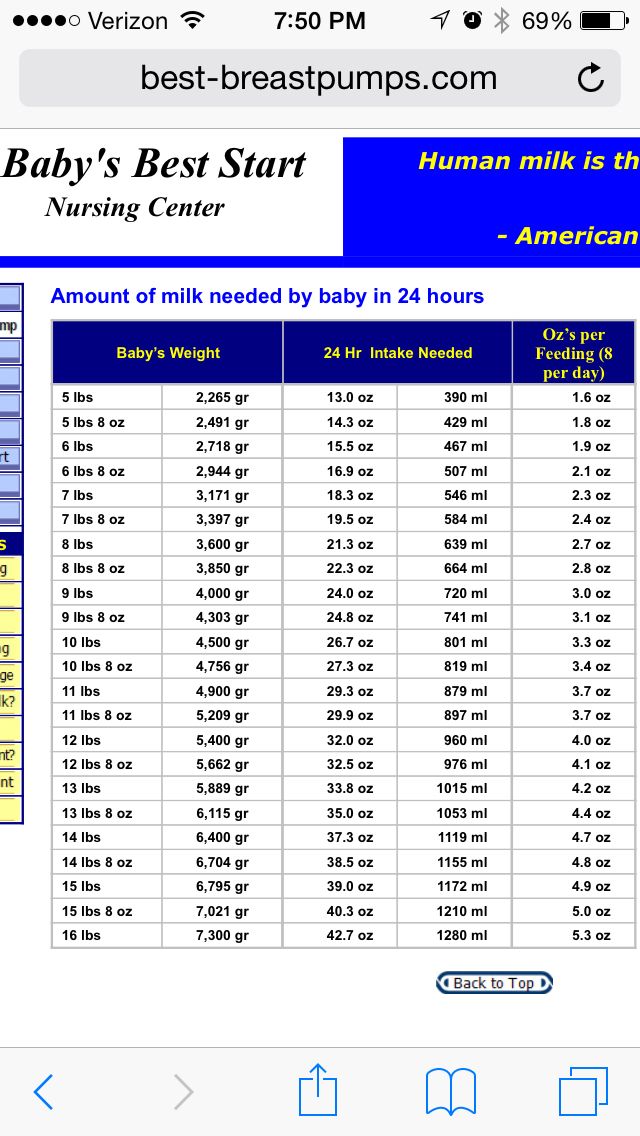 You should also pay attention to your feeding habits, as overfeeding can lead to obesity in the future. Sometimes pacifiers are used to soothe babies after a proper feeding.
You should also pay attention to your feeding habits, as overfeeding can lead to obesity in the future. Sometimes pacifiers are used to soothe babies after a proper feeding.
Important - this doesn't apply to newborns. In their case, it's best to feed them on demand, even if it's ten or fifteen times a day. As they grow up, newborns will develop their own infant formula eating scheme.
Too little food?
If your child never meets the 'goals' of the baby formula feeding chart, you should seek medical advice as well. It might be that your baby just like that, but it could also be some kind of health disorder. A particular red flag arises if a baby has trouble gaining weight. Typically a child should double their birth weight by 5 months old and triple it by a year old.. If this doesn't happen, always talk to a pediatrician, as it might a sign of an underlying condition. To help babies grow, doctors often recommend frequent feeding, even if that means waking up a sleeping child.
Signs of a well-fed child:
- Meets the growing-up goals and progresses proportionately on their growth charts;
- Develops properly - neither you nor the pediatrician, who sees baby regularly, notice anything out of the ordinary;
- Drinks the infant formula gladly but doesn't always act hungry; and
- Wet diapers - a newborn should have 2-3 wet diapers daily up to 5 days old. After that, they should have 5-6 diapers. Wet diapers are a good indicator of the baby's nutrition state.
Always seek medical advice if anything in your baby's eating habits or their behavior concerns you.
FAQ
How much formula should I give to a 3-week old baby?
A 3-week old baby should eat approximately 150 ml (5 fl oz) per kilogram of its body weight per whole day.
To find the total amount of formula needed for the day, you should multiply the baby's weight in kilograms by 150 ml or 5 fl oz. Every baby is different and has its own needs.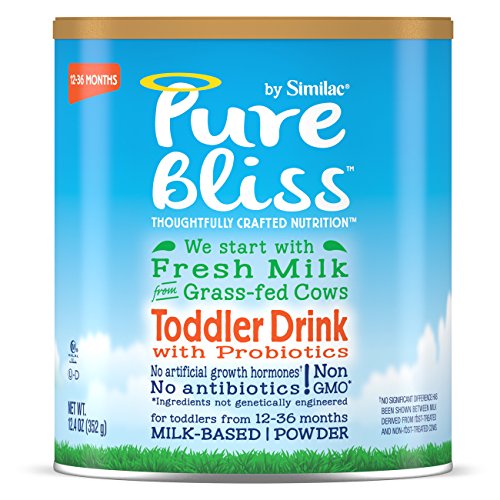 Always seek medical advice if anything in your baby's eating habits or behavior concerns you.
Always seek medical advice if anything in your baby's eating habits or behavior concerns you.
How do I count baby formula amounts per day?
To count baby formula amounts per one day, you should multiply the baby’s weight by their recommended daily intake by age. The quantities of formula per kilogram are:
Age | Amount of formula per day |
|---|---|
1-4 days old | 30-60 ml/kg (1-2 oz/kg) |
5 days - 3 months old | 150 ml/kg* (5 oz/kg) |
3-6 months old | 120 ml/kg (4 oz/kg) |
6-12 months old | 100 ml/kg (3-4 oz/kg) |
*some infants may require 180-200ml/kg (6-8oz/kg)
Every baby is different and has its own needs. Always seek medical advice if anything in your baby's eating habits or its behavior concerns you.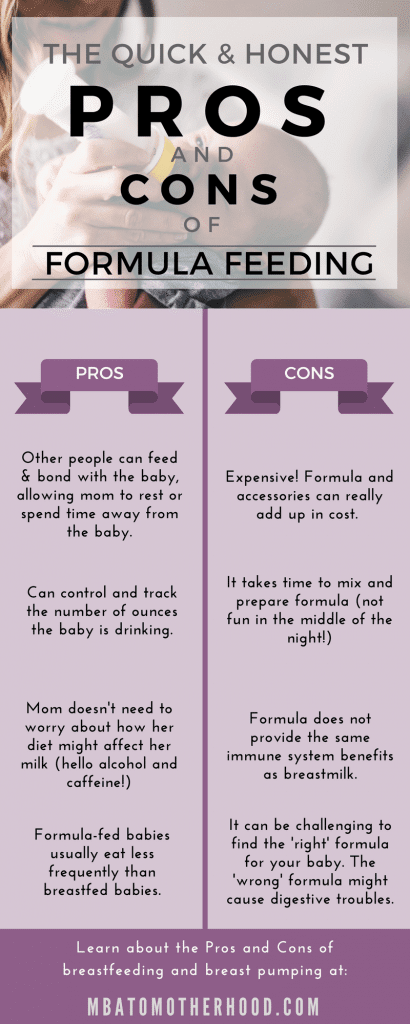
How do I count baby formula amounts per feeding?
To count baby formula amount per one feeding, you simply divide the formula per whole day by the number of feedings.baby formula amount per feeding = (formula per day)/(number of feedings)
Can I use two different types of baby formula?
Overall, it is safe to give your baby more than one type of formula, just follow the mixing instructions. So if you're thinking of changing the formula because of availability, price, or preparation reasons, you can do so. Some babies might not like the new formula taste, so mixing two formulas in varying proportions at the beginning can help your baby get used to the new flavor.
Every baby is different and has its own needs. Always seek medical advice if anything in your baby's eating habits or behavior concerns you.
Aleksandra Zając, MD
Baby's age
Baby's weight
Check out 16 similar pediatric calculators 🧒
Adjusted ageAmoxicillin pediatric dosageAPGAR score… 13 more
Power calculation
State autonomous educational institution
medium vocational education of the Republic Tatarstan
Zelenodolsk medical school” /technical school/
DISCIPLINE: PEDIATRICS
CALCULATION POWER
Zelenodolsk 2014
1.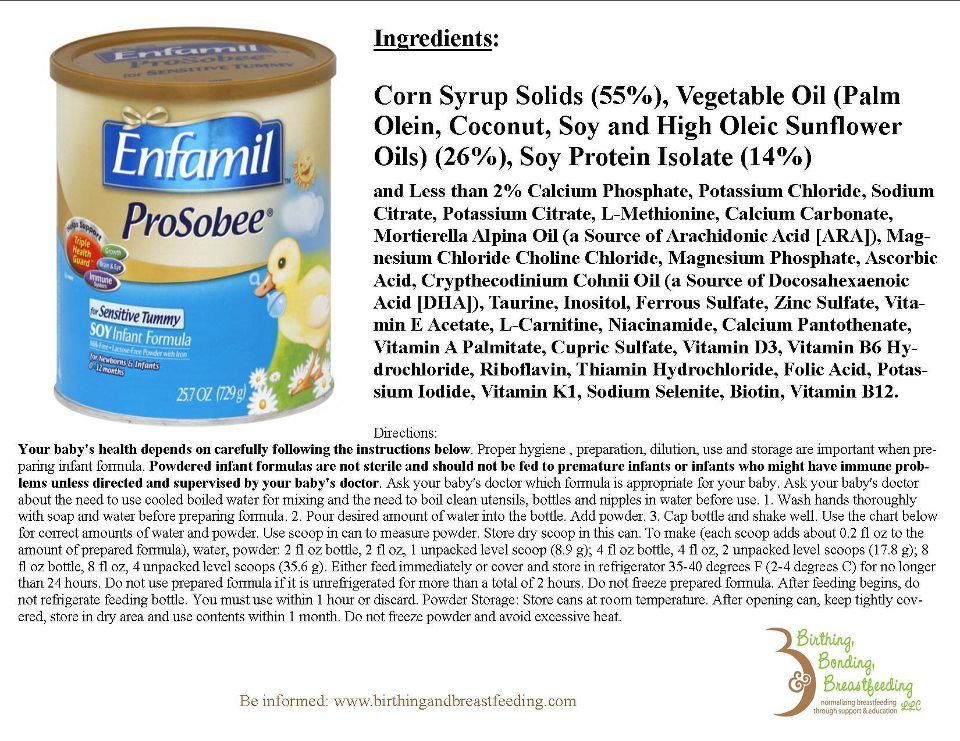 Calculation amount of milk in kcal.
Calculation amount of milk in kcal.
Knowing age and body weight of the child calculate the amount of milk per day.
For example. Child 1 month, weight 4 kg. Needs 500 kilocalories (kcal) per day. 1 liter breast milk contains 700 kcal. Therefore,
Daily the need for kcal per 1 kg of body weight will be:
-
AT 1 quarter of the year - 120-125 kcal
-
In 2 quarter of the year - 120-115 kcal
-
AT 3 quarter of the year - 115-110 kcal
-
AT 4th quarter of the year - 110-100 kcal
Power supply children older than one year
Daily caloric requirements in children age (according to the committee of experts FAO/WHO).
| Age child, years | Need in kcal/kg |
| 1-3 | 101 |
| 4-6 | 91 |
| 7-9 | 78 |
| Boys 10-12 | 71 |
| 13-15 | 57 |
| Girls 10-12 | 62 |
| 13-15 | 50 |
2. Definition daily amount of food (milk).
Definition daily amount of food (milk).
Counting according to the Heiner-Czerny formula.
-
From 2 weeks to 2 months - 1/5 of body weight
-
From 2 to 4 months - 1/6 of body weight
-
From 4 to 6 months - 1/7 of body weight
-
From 6 to 9 months - 1/8 of body weight
-
FROM 9 months to 12 months daily volume will be 1100 ml.
3. Definition a single meal.
Depends on the amount of feeding.
one-time volume (V p )˭V s / number of feedings (CC).
Quantity feeding:
-
Before 1 month - 6-7 times a day (after 3-3.5 hours with night break 6-6.5 hours)
-
FROM 1 to 5 months - 6 times a day (after 3.
 5 hours from night break 6.5 h)
5 hours from night break 6.5 h) -
FROM 5 to 12 months - 5 times a day (after 4 hours with night break 8 hours)
Example.
Child 6 months admitted to hospital in the children's department with a diagnosis: iron deficiency anemia, moderate the form; dystrophy by type of malnutrition I Art.
Complaints for restless sleep, stool with a tendency constipation, underweight, pallor skin and mucous membranes.
Child was born with a weight of 3200 g. From 1 month. child fed unadapted mixtures, receives complementary foods in the form of porridge 2-3 times a day. Juices and fruit purees eats irregularly.
Child sluggish, capricious. Skin and mucous membranes are pale. For feeding eats 100 ml of food. It has body weight deficit 16%, NPV 46 beats. per min., pulse 140 bpm in minutes. Subcutaneous fat the layer is thinned on the abdomen, chest, limbs.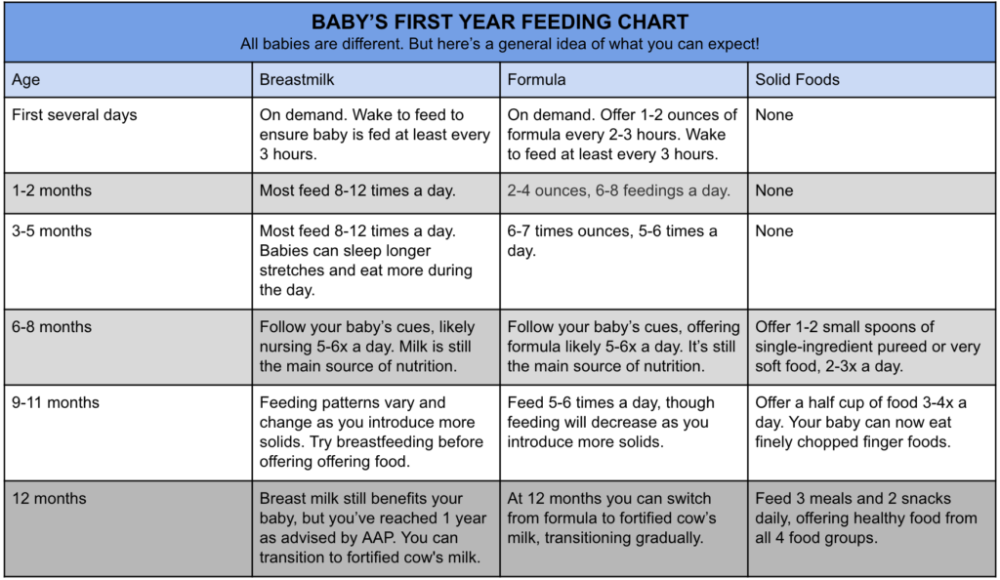
At blood test: er. 3.2 x 10 12 /l, Hb = 84 g/l, c.p. - 0.65.
Job: calculate the due weight, daily and a single meal. Make a menu child with malnutrition.
Answer:
Calculation nutrition is maintained at the proper weight.
Due weight is the weight of the child who must him to be in certain months of life.
DV = Birth weight + 650 x6(month child's life) = 3200+3900 = 7100
doses = 1000 ml
Quantity feeding - 6 times a day
Times. dose = 1000/6 = 160-170 ml
-
- mixture "Similak" - 170.0
-
- buckwheat porridge on vegetable broth 150.0+1/2 egg yolk
-
- minced meat (beef or liver) 20.0 + vegetable puree - assorted 140.
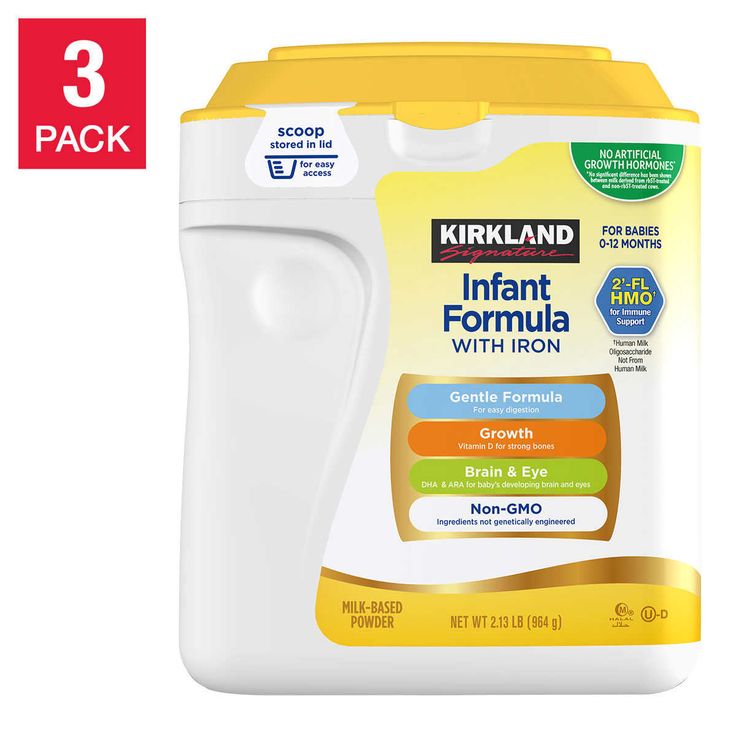 0
0
-
- kefir 150.0 + cottage cheese 20
20.00 mixture "Similak" - 170 ml
23.30- breast milk 170 ml
ORGANIZATION FOOD
Complementary foods all foods to include in the diet of children infancy as a supplement to human milk, its substitutes.
Healthy children who are breastfed It is recommended to introduce complementary foods not earlier than 6 months (Resolution of the World Assembly health care No. 54.2 dated 18.05.02 and No. 59.13 dated 04.05.2006).
Minimum age of introduction of the first products complementary foods - 4 months.
For example.
1.Children with reduced body weight, increased stool as the main food appoint porridges of industrial production, enriched with iron, calcium, zinc and iodine.
2.Children with paratrophy and constipation begin with vegetable puree.
POSSIBLE COMPLETE FEEDING SCHEME
four months - fruit juice
4.5 months - fruit puree
5 months - vegetable puree (the first main complementary foods)
5.5 meskasha (second main food)
6 home-made cottage cheese
6.5 meat (meat puree)
7 month - yolk, crackers, cookies
eight meskefir or other fermented milk products, bread
8.5 mes- fish puree
CHARACTERISTICS Complementary foods
-
Juices recommended first apple or pear, further other fruits
-
fruity puree - apple or pear
-
vegetable puree - one type of vegetable (zucchini), in further combination of 3-4 types
-
Porridge- rice, buckwheat.
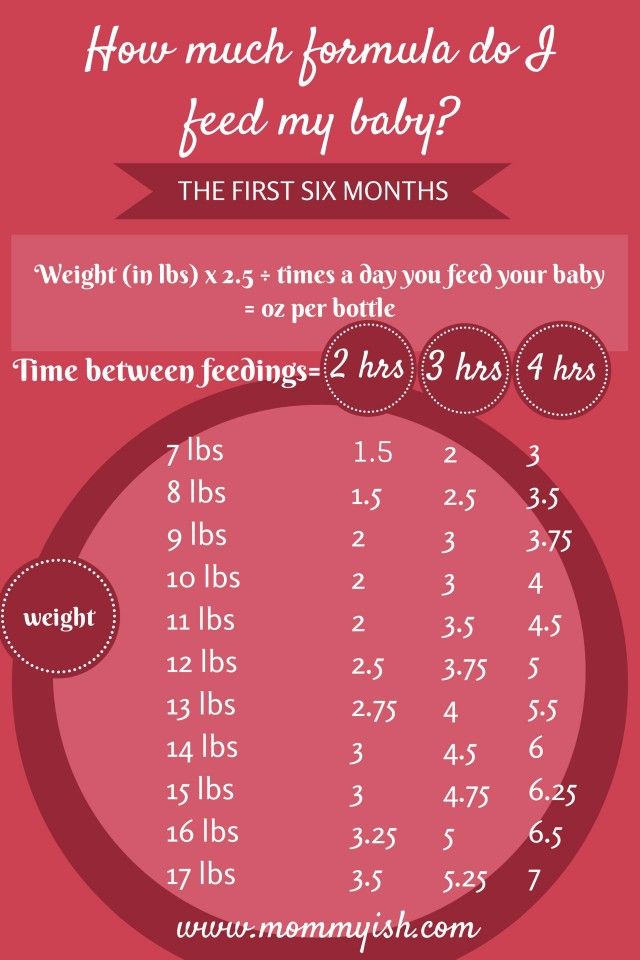 Further corn. Subsequently, oatmeal, barley, wheat, semolina or mixtures; maybe dairy and dairy-free.
Further corn. Subsequently, oatmeal, barley, wheat, semolina or mixtures; maybe dairy and dairy-free. -
Cottage cheese homemade
-
Meat- beef, lean pork, rabbit, chickens, turkey, horsemeat
-
Yolk- hard-boiled chicken eggs starting with ¼, working up to ½ of the yolk.
-
Kefir and other dairy products special drinks for children (Agusha etc.) - no more than 200 ml per day
-
fish puree - 1-2 times a week instead of meat. From lean varieties of fish. With a minimum the number of bones.
RULES COMPLETE FEEDING
-
Start off from a small amount, within 5-7 days increase to the required volume
-
To control tolerance of a new dish
-
Dish new give in the morning to note the child's reaction to its introduction
-
Vegetable complementary foods start with one type of vegetable, then gradually introduce other products of this group and form a multicomponent puree.
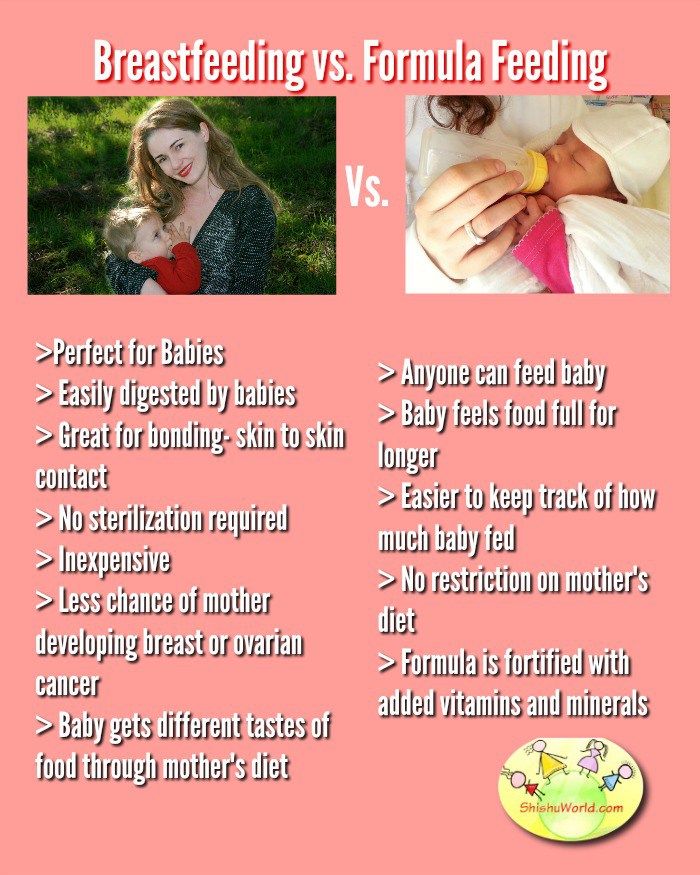 Similarly, fruit purees are introduced. and porridge.
Similarly, fruit purees are introduced. and porridge. -
Complementary foods give before breastfeeding with a spoon
-
New products are not removed if the child is sick and the period of professional vaccination
-
After each feeding must be continued apply to the child's breast
-
Term introduction of a new dish - 1 week, 1 more a week to fully adapt to the new dish
-
Enter only one new dish at a time; move on to the next one after full addiction to the previous
-
Dishes should be homogeneous, without lumps and easily swallowed
PRINCIPLES BREASTFEEDING ORGANIZATIONS
-
Early breastfeeding for the first 30 minutes 30 minutes after birth
-
AT first months of life feeding the demand of the child, followed by setting the power mode
-
Only breast milk for the first 4-6 months
-
Exception water from the diet of children on breastfeeding
-
Taking away from the breast not earlier than 1-1.
 5 years, provided that that the child is healthy.
5 years, provided that that the child is healthy.
Calculation of nutrition for newborns - Articles on baby nutrition from pediatricians and experts MAMAKO
— Olesya Vladimirovna, please tell us why it is important to calculate the amount of nutrition for a baby in the first year of life.
— Everything is important for a baby of the first year of life. Especially nutrition, thanks to which it actively grows and develops. Both quality and quantity matter. If a child does not have enough food, he becomes weak, “slows down” in mastering skills, and lags behind his peers in weight and height. Excessive nutrition is fraught with extra pounds and obesity - a real scourge of modern children.
- Let's talk about how to calculate the amount of breast milk that a baby needs.
— As I think most modern mothers know, we breastfeed our baby on demand. And no calculations are needed here. The baby himself calculates - as much as he needs, so much is applied to the chest.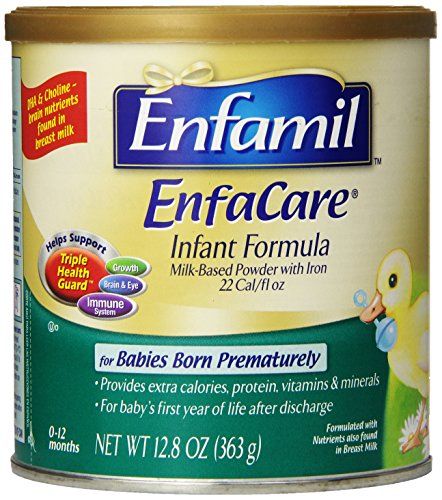 We control it by weight gain: the first three months, ideally, babies gain 800 g, the next three months - 700-750 g. If weight gain is significantly lower, we raise the issue of a lack of breast milk and the introduction in the form of an adapted milk formula.
We control it by weight gain: the first three months, ideally, babies gain 800 g, the next three months - 700-750 g. If weight gain is significantly lower, we raise the issue of a lack of breast milk and the introduction in the form of an adapted milk formula.
The baby itself regulates the frequency and duration of stay at the breast - this is how nature works, no additional calculations are required.
- Let's discuss the calculation of the nutritional norm for a newborn on mixed feeding?
- This is a situation in which the baby's diet contains both mother's milk and formula. Most often, we recommend this feeding if the woman does not have enough milk and the child is malnourished. Or when mom went to work or is forced to leave home for other reasons.
The first question I always hear in this case is how to calculate the volumes and ratio of both products.
First, let's remember that breast milk comes first. And only after the baby has emptied the breast, it is the turn of the milk mixture.
As for the volume: for milk is as much as mother has . For formula: try diluting a third of the age norm and observe the reaction of the child. He ate everything and ate, he is not naughty and falls asleep - that means that so much is enough. If he is naughty and wiggles his legs and arms, there was not enough food. Then next time, dilute the half age norm and observe.
To prevent the baby from giving up the breast in favor of formula, it is recommended to use the special supplementary feeding system - a tube that is fixed at the nipple at one end and is placed in the formula bottle at the other. So the baby sucks the breast, thereby stimulating lactation, but at the same time it is saturated thanks to the mixture.
As for the mode, here it is no longer entirely on demand. Our task is to establish a regime close to that on which the artificial baby is located.
Read also
- Olesya Vladimirovna, how to determine the daily amount of food for artificial feeding?
— In this situation, the baby's main diet is formula milk.
When formula feeding, it is recommended to give the baby formula every 3-3.5 hours, and the night break should be 6 hours. Older children are fed 5 times a day. The amount of food also depends on the age of the child. As a rule, indicative figures are on the packaging of the mixture. They should not be final, they are used as recommendations.
If your baby does not eat the calculated amount of formula, feed him more often, albeit in smaller portions. This is often the case in children born prematurely or with a shortened frenulum of the tongue.
When calculating nutrition scientifically, several approaches can be used at once.
If we focus on height and weight, then we take the Reiche method to calculate . To do this, we use a simple formula - the child's weight in grams is divided by his height in centimeters and multiplied by seven. So we get the daily volume of the mixture and then distribute it according to the number of meals.
Table: basis for formula calculation by age
Also, when calculating nutrition by age, you can use Shkarin's formula : a child at 2 months eats 800 ml of milk per day. For each week missing before this age, we subtract 50 ml, and for each month older we add 50 ml.
For each week missing before this age, we subtract 50 ml, and for each month older we add 50 ml.
Formula for calculating the nutrition of a newborn:
where n is the number of months of life
Most mothers are concerned about choosing the right infant formula. As a pediatrician, I will tell you what to focus on in this matter.
- the mixture must be adapted, i.e. as close as possible in composition to the breast milk of a woman,
- nutrition should be age-appropriate, and today there is a gradation of mixtures: 1 formula - up to 6 months, 2 formula - from 6 to 12 months, 3 formula - over 12 months,
- , there are additional inclusions in the mixture, and I am in favor of choosing a mixture with additional “usefulness”: nucleotides for immunity, lecithin for brain development, bifidobacteria for enriching the intestinal microflora, and so on.
Now let's talk about the mode. When breastfeeding, meals are organized on demand, but on artificial feeding requires a regimen of with optimal intervals.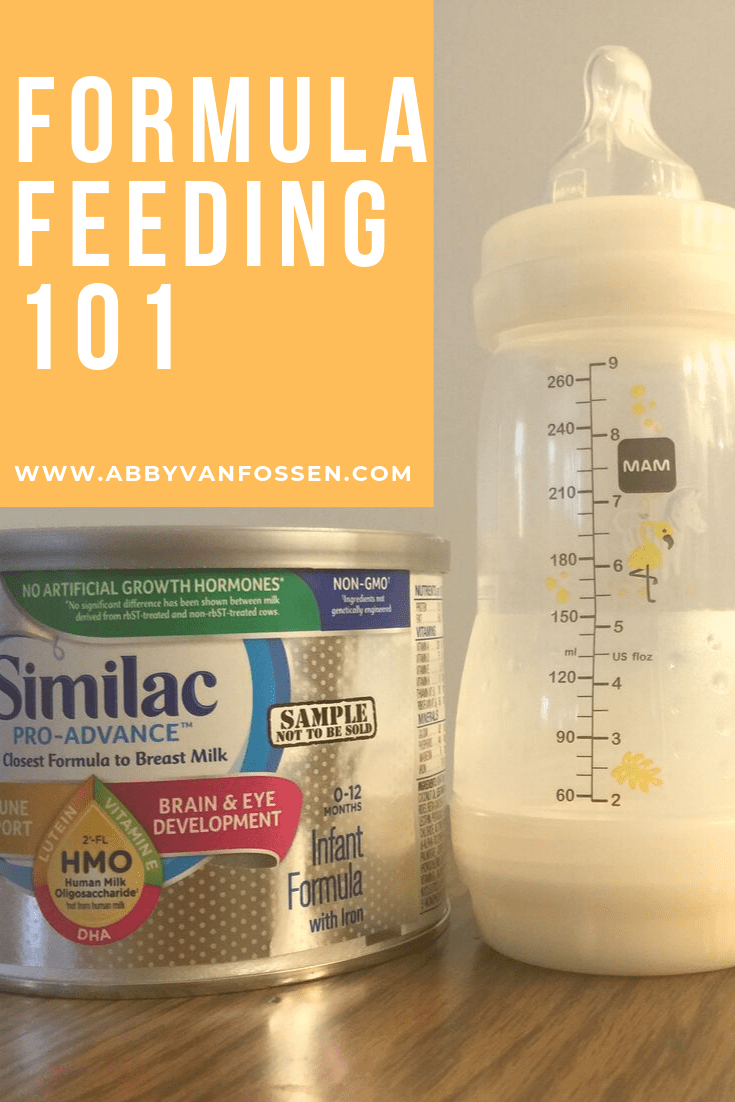 They are listed for each age on the food packaging. We recommend taking them as a basis, but adjusting to the individual characteristics of the baby.
They are listed for each age on the food packaging. We recommend taking them as a basis, but adjusting to the individual characteristics of the baby.
MAMAKO ® 1 Premium with 2'-FL human milk oligosaccharides is an important step in the evolution of baby nutrition.
— And one more question that worries moms. Is MAMAKO ® Premium with goat milk suitable for both artificial and mixed feeding, and why?
- Let's start with the fact that this is a premium segment - the highest quality and most comfortable food for babies. In addition, it has long been proven that goat's milk is much easier to digest in the gastrointestinal tract of a child, and therefore, nutrients, vitamins and trace elements are absorbed better.

 5-2oz) in their first few days)
5-2oz) in their first few days)